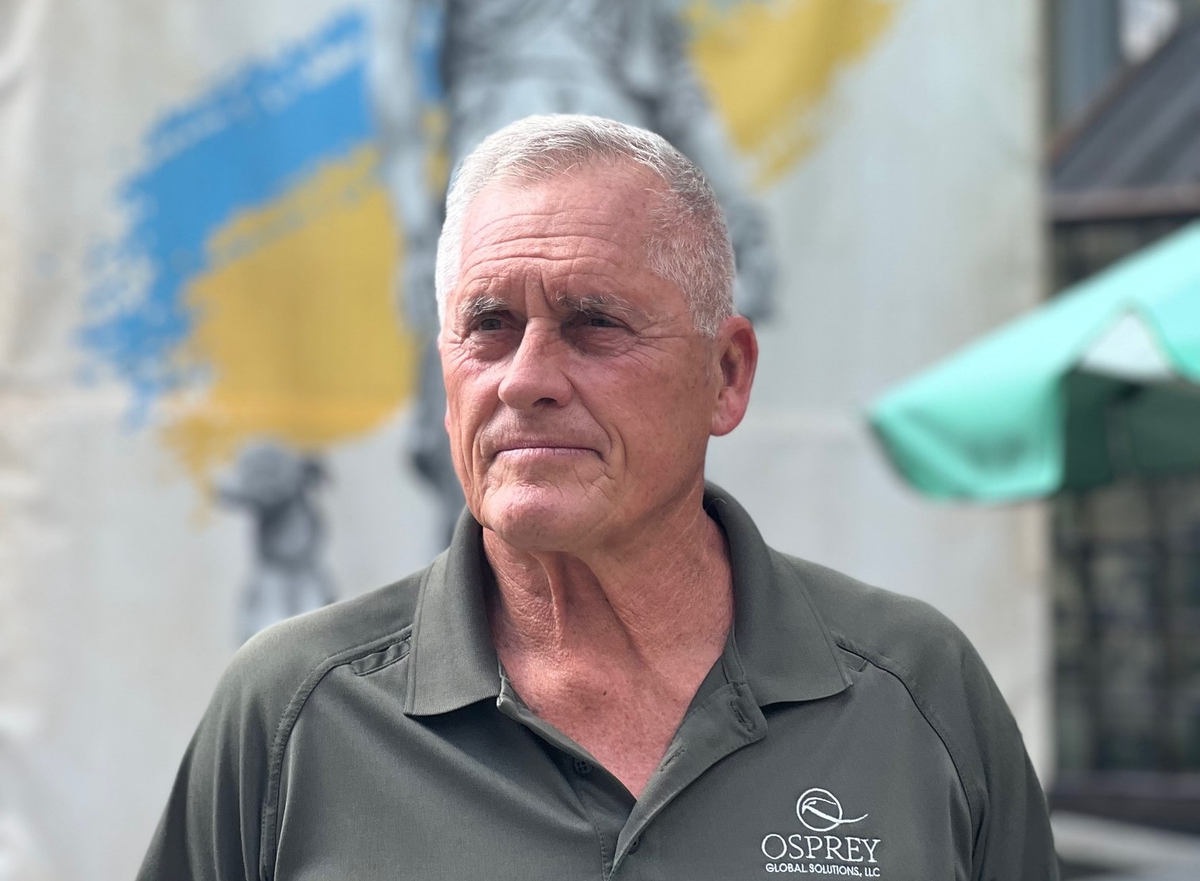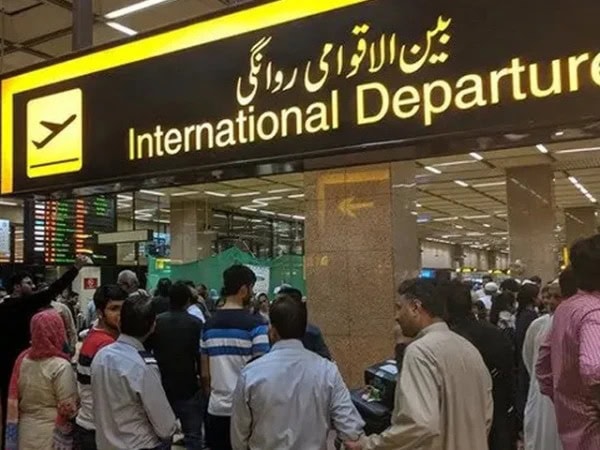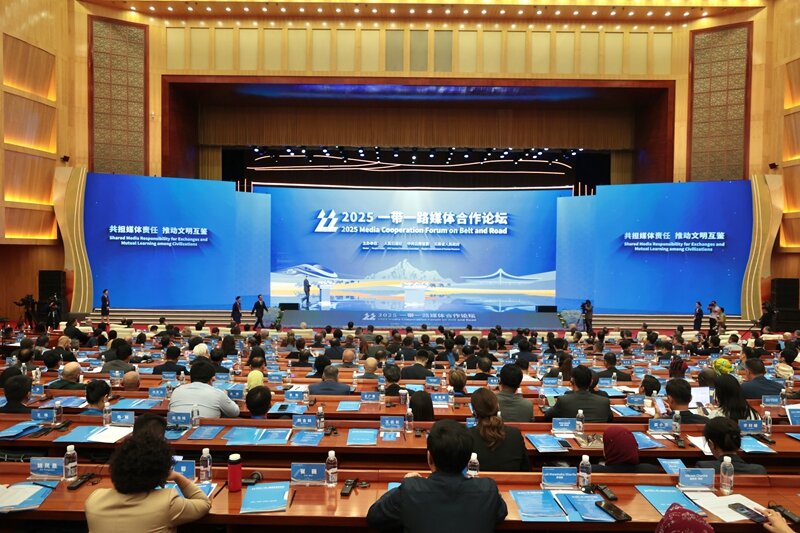“Innovations saved Ukraine, now industry must follow” – Major General Grange on Armed Forces transformation, defence and security challenges and the future of aviation
By Ksenia Bukshyna
Copyright kyivpost

David L. Grange, a retired US Army Major General, brings his extraordinary military background to his role as Chairman of the Supervisory Board of Ukrainian “Aircompany Constanta”. During his 30-year military career, Grange served with the 101st Airborne Division in Vietnam, commanded a squadron in the elite Delta Force during the invasion of Grenada, served as a task force commander during the Gulf War, commanded the Ranger Regiment and led the 1st Infantry Division “The Big Red One” before retiring in 2000.
In Ukraine, David Grange is primarily known for founding the Osprey Global Solutions Ukraine Foundation, which provides free NATO standard training for Ukrainian first responders and military personnel in demining, explosive ordnance disposal, and emergency medical assistance. His humanitarian work in conflict zones worldwide, including personally facilitating evacuations from Afghanistan between 2021-2023, demonstrates his commitment to crisis response and rebuilding efforts.
Appointed Chairman of the Supervisory Board of “Aircompany Constanta” in April 2024, Grange’s leadership aims to position the airline for both international operations and post-war reconstruction efforts in Ukraine.
In this interview, Major General Grange shares his insights on the evolution of the Ukrainian Armed Forces, readiness for long-term threats, steps needed to strengthen defense in the future, security challenges including demining, “Aircompany Constanta” operations, and the future of Ukrainian aviation.
General Grange, having observed Ukraine’s military since 1995, how would you characterize its transformation from a Soviet-style force to today’s battle-hardened army? What were the key turning points in this evolution?
My first time in Ukraine was in 1995 with one of the Partnership for Peace exercises in a training area outside of Lviv with Ukrainian airborne and mechanized armored forces. I was the assistant division commander for the 3rd Infantry Division US Army at that time stationed in Germany.
One thing that came to me immediately during the training was that it was obviously based on the Soviet model. Until the wall came down, I thought the Soviet military was much more powerful than it turned out to be in our training. Equipment was poorly maintained, training was lacking, leadership was poor. Good morale, tough guys, wonderful to train with, but I could see that they needed to westernize. Not that everything the West does is right, but it was much better than the Soviet structure. I’ve seen that in other Eastern European countries, the Middle East, Southeast Asia, and other places. In the 2014 time frame, there were good exchange programs with Ukraine and the United States and other NATO forces like UK and Belgium that helped quite a bit both ways.
When the war started again in February of 2022 and the Russians attacked Ukraine, the Ukrainian army was in survival mode, as well as many civilians who supported their country, whether first responders or farmers who took up weapons. They did an unbelievable job stopping the Russian advance – a lot of that was done with anti-tank weapons. Ukrainians took advantage of Russian weaknesses: poor logistics, poor maintenance, poor leadership, and inability to adapt to what they found on the ground.
Thank God the invasion was stopped and the Ukrainian army regrouped very quickly, built whatever they could immediately because of the emergency crisis, and pushed the Russians back in many places. Crimea was already lost, some of the oblasts were lost, but they still got back to some areas and regained a lot of territory.
Russians regrouped, and as they regrouped, the lines became very static. Many Ukrainian generals have commented that it’s like World War I, static defenses with what they call hybrid war innovations. The problem with the trench warfare model is that it’s just a grind of soldiers and the civilian population, and casualties mount.
Innovations saved Ukraine at that time. Ukrainians innovated faster than the Russians. The Russians rely mainly on mass, whether thousands of soldiers in an attack, hundreds of armored vehicles, missiles, or drone attacks. The innovations that Ukraine developed — everybody talks about drones, but there was more: tactics, how to counter electronic warfare, how to work social media, guerrilla warfare behind the lines, and attacking deep into Russian lines.
Whether by air, missiles, or drones against Russian targets, logistical facilities, or airfields with strategic bombers, they took back Russian control of the Black Sea without having a navy, using unconventional warfare, water drones, and other means. I think they’ve sunk about a third of the Black Sea fleet of the Russian navy.
But now we’re at an impasse, where both sides have drones, electronic warfare, and are using social media. There’s unconventional warfare on both sides of the front lines.
What has been learned by the Ukrainian military and shared with NATO countries, including the United States, is exceptional. The United States is trying to integrate what was learned by the Ukrainian military in this hybrid war, which is a combination of traditional and irregular warfare. But that doesn’t win the fight. That just keeps Ukraine alive.
You just mentioned the lessons learned by the Ukrainian army that can be used not only by Ukraine but also by the USA and the rest of the world. If you can name these lessons briefly, what would you say?
Obviously, the use of drones. Every war in history usually has a discriminator that comes with the innovation of technology and tactics. It could be the airplane and tank in World War I, or blitzkrieg in World War II. There are always discriminators. The helicopter changed warfare.
Now it’s almost reversed with the helicopter, although there are solutions. The drone is a great example, but so is electronic warfare, concealment on the battlefield, cover from artillery, air attack, and missile attack. The ability to use innovations by air, sea, and land is crucial because geography matters.
How do you use the ground effectively? How do you take large formations, which the U.S. uses quite a bit, so do the Russians, and hide them? How do they continue to communicate with all the electronic warfare going on?
Everybody talks about drones, but there are many tactics and procedures that will eventually evolve into doctrine, which is the way you fight. Then how do you apply that to different kinds of war?
The United States’ challenge is that the spectrum of war goes from guerrilla hostage rescue or terrorist attack, all the way up to major war with a competitor like Russia or China. What the United States has had to do is take innovations that Ukraine has developed and apply them to what our military must do. Our military is in over 100 countries at any day of the year, and they’re not all the same.
The United States military is not that large. The army has less than a million soldiers to fight with, and many of those do other functions. We have an advantage in technologies, but we don’t have the answer to everything, and we rely on allies like Ukraine.
What specific innovations and tactical lessons from Ukraine’s experience should militaries worldwide be adopting? Which developments do you consider most transformative?
You have to take it by the different functions of a military, whether attack, defense, maneuver, air support, indirect fire, mines, or medical support. The medical function is the one I’ve been involved in the most. We’ve been working in Ukraine since a few months after the invasion in 2022, mostly with medical support, providing surgical supplies or training for medics for trauma care, as well as explosive ordnance disposal.
The tactics, techniques, and procedures that the U.S. military uses for medical support for the wounded and evacuation won’t work the way we plan in this kind of war. The “golden hour,” the time it takes to evacuate a wounded soldier from the front lines back to the next level of care, is not survivable unless you have complete control of the skies. The United States is spoiled because we normally have air superiority of commanders and elected officials.
That won’t happen if we fight Russia or China, or even in some less developed countries, because of surface-to-air missiles or techniques learned from Somalia with RPG fire. Medical evacuation, which is the responsibility of commanders and leaders of nations, is a big deal. We’ve been working with Ukraine on means of evacuation to save lives and give hope to injured soldiers, which is a big morale factor and a responsibility.
Post-ceasefire, what critical military capabilities must Ukraine maintain to deter future Russian aggression? How should Ukraine balance demobilization with long-term readiness?
I look back at the United States after World War II. The American people were done with wars, just like your country. No one wanted more. Then 5 years later, Korea came. We had ignored preparations for the future. We reduced our army, didn’t buy new equipment, didn’t look at technology for innovation. We were caught off balance by North Korea.
The same happened after Vietnam. No one wanted war, and we had social media and propaganda problems. The American people were not supporting the military. After Vietnam, there was a period where our army was struggling. Training was terrible. No one wanted to talk about the military. We were not prepared for what came next. President Reagan fixed that.
When Ukraine comes to some agreement with Russia, you cannot rest. Ukraine must ensure they have a recruiting base and trained manpower. Even if citizens go to training and then return to civilian roles, they must be prepared for call-up immediately. You almost have to do like Israel does because of the threats. You need people trained and ready to return to service. Once the first bullet is fired, you don’t have time for an elaborate recruiting plan.
Weapons and equipment must be given to you, bought by you, made by you, and a base for the military must be there. If there is a ceasefire, it’ll be violated. There will probably be a pause by Putin. But you have to be constantly prepared by land, sea, and air with what you have, what you can get and what you can manufacture.
To do that, you have to take care of the soldiers you’ve recruited, whether they go back to civilian life or not. Continuation of care from the day they join until they take their uniform comes off, including veterans’ hospitals for prosthetics, PTSD, traumatic brain injury, and support for their families. Without that, you have no morale or the will to serve again.
When you get equipment, it must be maintained and trained upon. Ukraine’s advantage is its defensive posture, which is easier than attacking. You’re defending your own territory, your own sunflower fields, wheat fields, cities, and villages. You have the will to defend.
Keep the technologies going, build the Army stronger than it was, and state that it’s for defensive purposes, just like the Baltic states, Poland, Slovakia, Hungary, and Romania are doing. The military readiness will not end. You live in a tough neighbourhood.
What economic and institutional reforms are critical for sustaining Ukraine’s military capabilities long-term? Where do you see the greatest obstacles to building a self-sufficient defense industrial base?
You need public-private partnerships with commercial companies and the military. We’re going through that in the United States. Our bureaucratic process to bring new equipment to the military is too slow for today’s world.
Building an industrial base is important. Getting partnerships with other countries is crucial for Ukraine because they’re not in NATO. It’s all about bilateral agreements with the United States, United Kingdom, or others.
Ukraine has a lot to offer. The United States cannot sustain its military industrial base without raw materials. Ukraine is flush with rare earth metals and elements — the best deposits in Europe. Make agreements with the United States immediately. Don’t try to be too aggressive about it. Take what you can get now and establish those partnerships. The United States and Europe need these resources for everything from cell phones and computers to satellites and military equipment.
Take care of whatever you can abroad that can be brought back to Ukraine immediately, whether during conflict or after a ceasefire. Economics is critical. You have bureaucratic problems just like the United States. You have corruption problems — we all do. But that turns off potential partners. I talk to many congressmen and senators who always bring up corruption, inefficiencies, and regulatory controls that make it hard for private companies to work with Ukraine. That has to change.
As Ukraine faces the world’s largest demining challenge, what immediate actions are most critical, and how should the international community prioritize support for this humanitarian security issue?
This issue is very dear to my heart. I dealt with it extensively in Bosnia and Herzegovina after the Balkans fighting. Think about Cambodia, many places in the Middle East, and Africa. It’s pretty much everywhere, but you have the biggest problem right now.
There are multiple levels: agricultural areas like sunflower and wheat fields with massive mine problems that require machinery and international support; and specialized mine/IED/booby trap issues in villages, schools, and playgrounds from the Wagner Group, Chechens, or other Russian-affiliated organizations, which require individual expertise by deminers.
The longer you wait, the worse it gets. When vegetation starts growing again in areas that have been destroyed by artillery or missiles, when roots start growing on trees, it makes demining harder. Mines move in the ground due to weather, freezing, flooding. A surge needs to happen to start demining as soon as possible.
Many people don’t want to support Ukraine until there’s a ceasefire, but that’s too late. Demining must be done immediately. It should be a first priority, alongside services for life support like electricity, water, and fuel.
Training programs and contracts provided by other countries or international organizations to help demining efforts need to be increased. It’s easier to get international support for demining than for fighting, as it’s more humanitarian-focused. Our non-profit helps with demining when we can, though small we to continue.
In April 2024, you joined Constanta’s board at a critical moment during the war. What factors influenced your decision to take this role, and how do you envision the company leveraging its international operations now while positioning for Ukraine’s future recovery needs?
I had to think about this for a while. When you join a foreign board, there are regulations in the United States that must be followed. I had to ensure I wasn’t compromised and went through a vetting process to make sure it was an upstanding company with great leadership. Otherwise, I wouldn’t have joined “Constanta”.
I also checked what they’re doing outside of Ukraine — in Africa, Central Asia, and parts of Europe. I think it’s a great opportunity. “Aircompany Constanta” is operating internationally, still using their airframes and pilots. I know they have great pilots and good maintenance, which is important anywhere, and they’re respected internationally.
As soon as there is a ceasefire, “Constanta” can help their country by monitoring the ceasefire along the zone of separation, or whatever is put in place. I think they would be ready to go because of their current work overseas — to do resupply, medical transport, foodstuffs, supporting humanitarian efforts for the rebuild of Ukraine, and to start services between countries within Europe and Ukraine right away.
The opportunity is there, the leadership is there, and the reputation as a good organization is there. So they’re ready to go, and I feel good about being part of the organization.
Ukraine’s aviation sector faces unprecedented challenges today. What specific preservation strategies are essential now, and why do you see aviation as a critical component of both national security and economic recovery in Ukraine’s future?
I’d say the same thing about the shipping industry as I would aviation. You have to operate as a country by air, land, and sea. Everybody has airspace and land, not everybody has coastline. But you have to be prepared for trade and military operations in all three domains.
If we have a ceasefire, where’s the aviation? Ukraine has to prepare now. Support “Constanta” with their overseas operations, have them ready to go back to Ukraine immediately. It takes time to build new aircraft and get certified. Support those that are good to go now, so you’re ready when airspace allows you to operate again.
The bureaucratic processes that may hinder movement need to be streamlined to support aviation and shipping. If I were a leader in Ukraine, I’d be pushing that very hard, because the time will come, and you have to be ready. The government is responsible for ensuring operations by land, sea, and air to support its population, economy and military.
Given all the potential of the industry, from manufacturing to human capital, what steps from the government should be taken to support and develop this strategic industry? What would you recommend?
Geography matters. The geopolitical situation matters. Ukraine is in a unique location at a crossroads for Europe. People talk about NATO all the time, but no NATO country has any desire to attack Russia. NATO was established to defend each other.
Bilateral agreements must be done as quickly as possible to enhance the defense and future of Ukraine. But Ukraine has to help those other countries as well — they have to get something out of it. It can’t be just “give me, give me, I deserve it.” It has to be a partnership that helps both countries.
On the geopolitical stage, this is difficult for the United States because we are everywhere. The military, just the Army itself, is in over 100 countries every day of the year. The United States can’t ignore Asia Pacific, Europe, Ukraine, or the Middle East. Ukraine has to understand that and work out deals that support the United States as well.
Economics rules, and I mentioned rare earth elements and minerals. But there’s also technology sharing. One thing I’ve learned is the robustness of Ukrainian technology — Ukraine is very technologically advanced. That’s why they’ll have no problem with support for the aviation business or shipping industry. They’re in a great place with the intellect of their population. Hopefully many people who left will return to help develop the next phase.
I have been proud with Osprey Solutions Ukraine. You have supported Ukraine’ s freedom and defence against aggression, and we plan to continue to the best of our ability.



